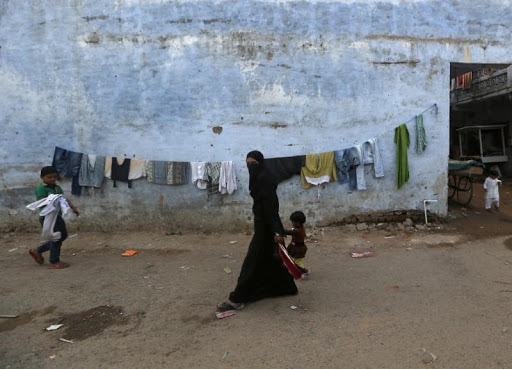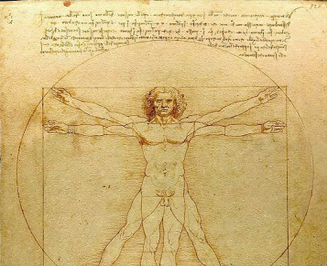
At one point in James Joyce’s modernist masterpiece, Ulysses, the character Stephen Dedalus presciently observes that history is a nightmare from which he is trying to awake. In fact, in a very brief interlude, while teaching Roman history, Stephen contemplates the costs through which a war, any war, is borne and very soon this daytime reverie gives place to an apocalyptic vision of “toppling masonry” and “the ruin of all space”. This interlude is noteworthy because it brings together in its compactness some very key issues – that of the notion of space and violence. What this essay attempts to do is to explain the intricate, symbiotic, and often fluctuating, way that forms of violence and violent practices are tangled up with the notion of spatial order and how situated within this relationship is the way body, as a contested topography in itself, becomes a field of transcription.
Spaces of Order or Order of Spaces?
To fully tackle the multifarious problem of spatial order and what its connotations are, it is very useful to first distinguish the notion of space from that of place. Quite like the parole aspect of language, the place is the grammar, and according to de Certeau, it is the “law of ‘proper’ rules.” Moreover, a place is where ‘the elements taken into consideration are beside one another, each situated in its own ‘proper’ and distinct locations, a location it defines. A place is thus an instantaneous configuration of positions. It implies an indication of stability (de Certeau: 1984, pg 117).’[i] On the other hand, space is not a moment of instantiation and lacks the stability and rules of the place; it is made up of “vectors of direction, velocities, and time variables,” composed of “intersections of mobile elements (de Certeau: 1984, pg 117).” Most importantly, unlike place which is characterised by its static nature, space is always in a state of becoming, always in the process of being actualised, and this actualisation can be said to be predicated upon the properties of combination, much like speech is. Space is produced always as an effect of the “operations that orient it, situate it, temporalize it, and make it function in a polyvalent unity of conflictual programs or contractual proximities (de Certeau: 1984, pg 117).”
At the same time, one can argue that the notion of ‘place’ by being a system of grammar and rules also can be said to constitute a body of knowledge, or more precisely an episteme, whose very condition of being would be to initiate a process of naturalization; but ‘space’, because it is a product of practices, through its production it produces the episteme. Therefore, the separation of the place from the space as two distinct taxonomic categories does not hold and through a discursive formation, both can and do metamorphose into each other.
A very good way to make visible the faultlines of this discursive formation is to look at liminal spaces. In a famous essay, Victor Turner problematizes the concept of liminality through something he terms “structural invisibility.” He notes that “as members of society, most of us see what we expect to see, and what we expect to see is what we are conditioned to see (Turner: 1967: 95-96)”.[ii] What we are conditioned to see is what can be categorized. The structural invisibility of culture makes it impossible for the undefined or the uncategorized to exist. Hence, Turner accounts for the presence of “religious definitions” to exist because of its primary purpose would be to define the undefinable, and, therefore, “a society’s secular definitions do not allow for the existence of a not-boy-not-man (Turner: 1967: 95-96).” Turner’s theoretical characterisation of liminality can also be very useful to conceptualize the notion of liminal spaces and can be argued that owing to their structural invisibility, their undefined nature, these spaces very often become sites of contestation.
Weizman notes how in the frontier regions of the West Bank, such as the settlement of Migron, the dynamics of contestation can take several forms. In Migron, for instance, one of the claims of settlement predicated itself upon an attempt to define the region in Biblical terms, although archaeological excavations did not prove any relation to the Bible whatsoever. In the imagination of the Israeli colonizers, especially the youth, this liminality of the frontier also has a potential to spark their imagination when they begin defining the region as being quite similar to the American frontiers, and this leads to a sort of mythicisation based on the Spaghetti westerns of Hollywood, while at the same time intersecting with the “Israeli myth of pioneering Zionist settlers of the early twentieth century (Weizman: 2007, pg 4)”.[iii] On one hand, although, we have the armed Israeli guards who constantly drive away from the Palestinian farmers from these frontier regions, one the other hand, the armed Palestinian militants, in their attempt to define the region, retaliate against the Israeli settlement by repeatedly attacking the outposts (Weizman: 2007, pg 4).
These frontiers, owing to their fragmented nature and elasticity, challenge the “geography of stable, static places (Weizman: 2007, pg 4)”. Weizman frequently terms the settlement of the Occupied Palestinian Territories as constituting an act of colonization, and hence, there is a constant need among the colonizers to define these territories in terms of the principles of “rational organization, classification, procedures, and rules of administration (Weizman: 2007, pg 5),” or, in other words, to construct a notion of scientificity, an episteme, on whose terms it becomes possible to separate “what may from the what may not be scientific (Foucault: 1982, pg 197)”.[iv]
This act of colonization also requires the construction of a national narrative, and we see this happening very crucially in a city like Jerusalem, a city that is at the heart of three intersecting faiths – Judaism, Christianity, and Islam. In Jerusalem, apart from the administrative construction of the city through the layout of roads and other infrastructural properties, there is also a cultural property that is at play, and it is extremely crucial to the colonization of the city because it helps “domesticate” the unfamiliar. Architecture, as a visual grammar, codifies within it and in its various planning strategies, through its corporeality, the constructed historical narrativization of occupation. Weizman notes, for instance, how in the various debates about setting up a masterplan to inhabit Jerusalem, the issue of using stone as a construction device was crucial; it was crucial because by emphasizing the power of the stone, Jerusalem would be authenticated in its homogeneity, not only ethnically, but historically as well, with “strong associations to the ancient holy city of Jerusalem (Weizman: 2007, pg 27)”.
But at the same time, this organization of space cannot be called the prerogative of the Israeli state alone, but because space is contested owing to its liminality, the various actors in the field of contestation are diffused. Weizman calls it “structured chaos,” where, “ the actors operating within this frontier – young settlers, the Israeli military, the cellular network provider and other capitalist corporations, human rights, and political activists, armed resistance, humanitarian and legal experts, government ministries, foreign governments, ‘supportive’ communities overseas, state planners, the media, the Israeli High Court of Justice – with the differences and contradictions of their aims, all play their part in the diffused and anarchic, albeit collective authorship of its spaces (Weizman: 2007, pg 27)” Owing to the multiplicity of actors and forces acting on this geographic space, Weizman argues that the Occupied Territories have become a “political plastic,” and, hence, to understand this plastic geography, it is imperative to map the various forces in relation to each other (Weizman: 2007, pg 28).

The Gujarat riots of 2002 is an excellent illustration of the semiotics of the body-spatiality complex. If we follow the Tehelka[v] report which came out after the massacres, we can observe a very neat pattern.
One of the rioters notes that there were two pre-eminent ways to signal a Muslim – the first was to use the voter’s list and through it deduce the areas which were predominately inhabited by Muslims. The second way, apart from their names, was the codification of their religion and identity on their bodies, such as the markers of circumcision; therefore, stripping the male Muslims was important to ascertain, through their circumscised penises, whether they were Muslim or not. Another rioter, called Babu Bajrangi, chillingly states about the massacre at Naroda Patya in Ahmedabad: “Hacked, burnt, set on fire, many things were done… many… We believe in setting them on fire because these bastards say they don’t want to be cremated, they’re afraid of it, they say this and that will happen to them…”
The body, already spatially situated, defines the space and is in turn defined by it. The forces which act on this body, here that of the Muslim, acts to first archeologically excavate the signifiers of alterity from this body and following from such excavation to again act on it to subjugate it and subjugating it by inscribing ideologies of domination on it. Burning and cremation is one such ideology of domination, here that of the Hindu over the Muslim, and such an act enforces the language of the dominant over the subjugated, to further subjugate them, to make them realise the fate of their subjugation. Signifiers of alterity can also be seen in the ritual of the ‘telling’ in Belfast. Feldman observes that “the proper reading of the various signs of embodiment, including dress, insignia, and speech,” can only be achieved by locating the body of the Irish, whether Protestant or Catholic, in specific “residential affiliation.” This exercise in signification establishes the merging of the body space and geographic space (Feldman: 1991, pg 58).
To come back to Joyce, with which we started this essay, many commentators have observed how Ulysses was written in response, and, perhaps, in a singular act of rebellion, against the on-going tide of Irish nationalism, which had become very militant, and to whose cause poets like Yeats had dedicated themselves. In the face of the Thanatos, it is on the lap of a single day where Eros lies.
Arnav Das Sharma is a PhD student in the Department of Sociology, Delhi School of Economics. He is also a journalist and author, and his first novel Darklands will soon be published by Penguin Random House.
[i] de Certeau, M. 1984. The Practice of Everyday Life. Berkeley: University of California, Berkeley Press.
[ii] Turner, V. 1967. Forest of Symbols: Aspects of Ndembu Rituals. Ithaca, NY: Cornell University Press.
[iii] Weizman, E. 2007. Hollow Land: Israel’s Architecture of Occupation. London: Verso.
[iv] Foucault, M. 1982. Power/Knowledge. London: Penguin.
[v] http://archive.tehelka.com/story_main35.asp?filename=Ne031107After_killing.asp, accessed on 5th July 2020.
Bibliography:
Arendt, H. 1969. On Violence. New York: Haarcourt Brace.
Bakhtin, M. 1984. Rabelais and His World. Bloomington: Indiana University Press.
Das, V. 2005. Life and Words: Violence and the Descent into the Ordinary. Berkeley, Los Angeles: University of California Press.
Fanon, F. 1963. The Wretched of the Earth. London: Penguin Classics.
Feldman, A. 1991. Formations of Violence: The Narrative of the Body and Political Terror in Northern Ireland. Chicago: University of Chicago Press.
Foucault, M. 1977. Discipline and Punish: The Birth of the Prison. London: Penguin.
Macek, I. 2009. Sarajevo Under Seige: Anthropology in Wartime. Philadelphia: University of Pennsylvania Press.
Verkaaik, O. 2005. Migrants and Militants: Fun and Violence in Pakistan. New Jersey: Princeton University Press.
